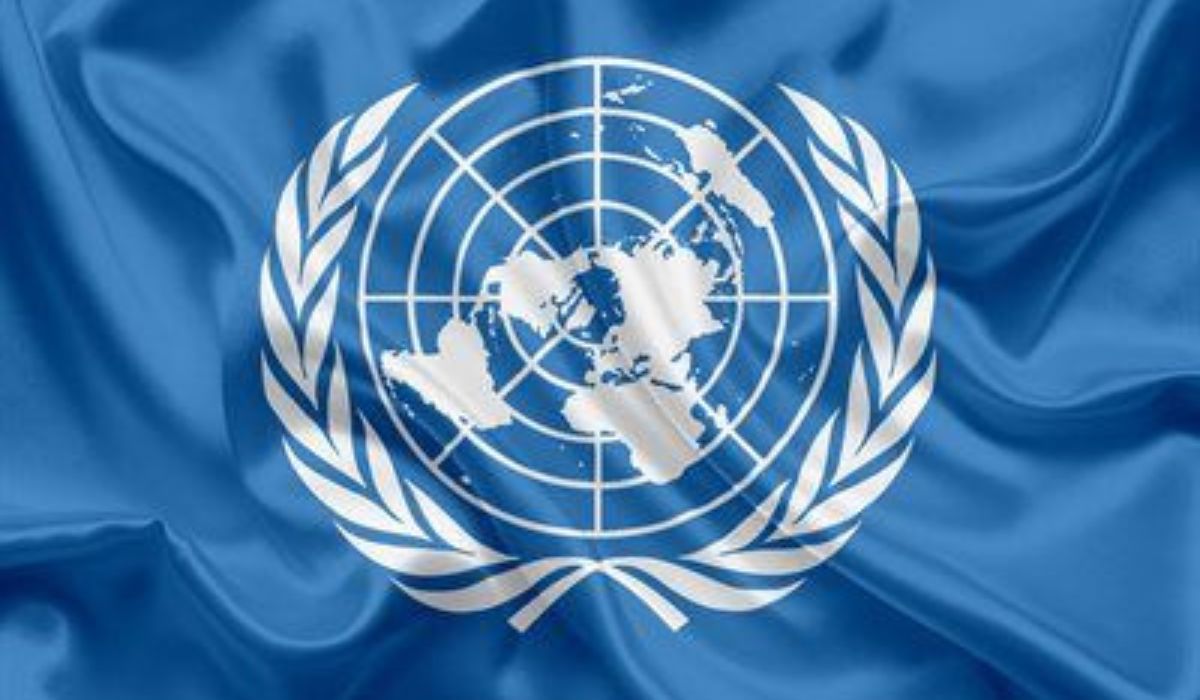Introduction
To promote peace, security, and cooperation among states, as represented by the UN flag, is one of the organization’s primary goals. The unique design of this flag, set against a deep blue background, expresses the hopes and dreams of people everywhere for a more peaceful and prosperous future. This article explores the history, symbolism, and meaning behind the United Nations flag.
Design and Meaning
The United Nations flag is primarily blue with a white symbol in the middle. The blue emblem, which depicts Earth as seen from space and is also known as “olive branches and world map,” is a symbol of peace and unity. Around the world map, olive branches represent peace and the group’s dedication to nonviolent conflict resolution.
The insignia is set against a dark blue field, representing the UN’s role as a symbol of hope in a troubled world. The deep blue colour represents trust, loyalty, and stability, all of which are crucial to promoting international collaboration and keeping the peace around the world.
Historical Significance
On October 20, 1947, the winning design from a contest held by the United Nations to design an emblem to represent the organisation was officially accepted as the UN flag. American architect Oliver Lincoln Lundquist proposed the winning design, and it hasn’t altered since. On June 26, 1947, a new era of international cooperation was inaugurated with the raising of the United Nations flag over the United Nations Headquarters in New York City.
Symbolism of Unity and Cooperation
The flag of the United Nations is a powerful emblem of international harmony and cooperation. It represents the fundamental values of the United Nations, such as respect for international law, protection of human rights, advancement of society, and promotion of economic growth. The flag is a continuous reminder that all nations must cooperate to find solutions to global problems and create a better future for all people.
Global Recognition and Respect
The flag of the United Nations is readily recognisable and significant all across the world. It hangs prominently in the main UN building and in all UN offices around the world. During formal UN ceremonies, conferences, and peacekeeping deployments, the flag is also raised to show support for the organisation and its goals.
The insignia is used as a symbol of the United Nations in a variety of contexts beyond the flag itself, including official documents, websites, and promotional materials. It has become a symbol for the United Nations’ work to foster international stability, safety, and collaboration.
Historical Events and Symbolism
The United Nations flag has flown over landmark events that helped build our modern world. The flag served as a point of negotiation and understanding between the two countries during the height of the Cold War. In the face of deep ideological divides, it represented a beacon of light and the possibility of peaceful compromise.
The flag has also been flown during times of crisis and war to represent worldwide efforts to intervene and restore calm. Communities in war-torn regions often look to the United Nations flag as a symbol of hope, as it offers a promise of help in reestablishing peace and stability.
Peacekeeping Missions
There is a strong connection between the United Nations flag and the peacekeeping missions that have helped end wars and safeguard civilians around the world. Raising the blue flag in a war zone indicates the presence of peacekeepers whose mission is to restore calm and protect civilians.
The UN’s light blue helmets and berets are instantly recognisable, The United Nations Flag, and so is the fact that peacekeepers risk their lives to protect the principles outlined in the Charter. Their banner symbolises their cause, which is to bring peace and safety to communities that have been shaken by violence.
International Collaboration and Solidarity
The flag of the United Nations also represents the ideals of world unity and cooperation. Poverty, climate change, human rights violations, and pandemics are all examples of global concerns that require international cooperation to solve. The flag symbolises the fact that these problems are too complicated for any one country to handle on its own. It represents the necessity for people to work together to make the un flag, planet a better place for future generations.
The flag has been adopted as a symbol by people of all backgrounds and beliefs all around the world. It’s a striking illustration of how, despite our differences, we’re all interconnected and bound by the same fate. The flag serves as a symbol of unity that brings people together regardless of their location, language, or political beliefs.
Inspiration for Individuals and Nations
When people and countries see the United Nations flag, they are encouraged to strive for greater things and help create a better world. It’s a symbol of hope for world peace, collaboration, and the advancement of human rights for all. The flag serves as a continual reminder of the importance of working together to solve the world’s most serious problems during international conferences, diplomatic gatherings, and humanitarian activities.
When people see their flag flying high, it can inspire them and motivate them to make a difference in their communities. It serves as a timely reminder that even the smallest of efforts can contribute to creating a more equitable, peaceful, un flag,and welcoming global community.
Conclusion
The flag of the United Nations is an everlasting emblem of international harmony, cooperation, and peace. It’s a visual reflection of the UN’s goals and objectives, a call to action to solve global problems and create a brighter future for all people. The history, symbolism, and identification of the flag with peacekeeping missions encourage people and nations to work towards a more peaceful and just world. The United Nations flag is a continuous reminder that together we can overcome even the most significant obstacles and create a better world for generations to come, a message that is especially important as we continue to negotiate the complexities of our day.











